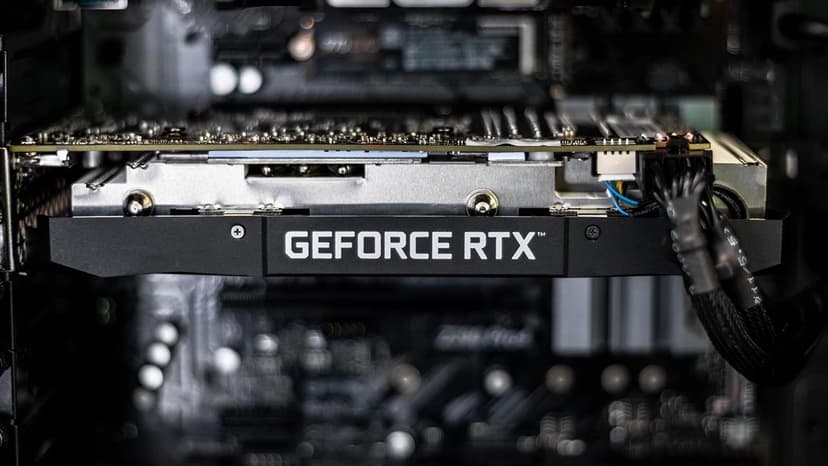Understanding GPT: The AI That Understands and Writes Human Language
Have you ever chatted with a robot and been amazed at how it seems to understand exactly what you're saying? That's the magic of GPT, or Generative Pre-trained Transformer, at work. Let's dive into what GPT stands for, how it functions, and why it needs a mountain of data to talk like a human.
What Does GPT Stand For?
GPT stands for Generative Pre-trained Transformer, which might sound like a mouthful, but it's actually a pretty accurate description of what it does and how it works. Let's break it down:
Generative
The word "Generative" refers to the model's ability to generate new content. Think of it like a chef using a recipe to whip up a dish. Instead of food, GPT cooks up sentences and paragraphs. It doesn't just copy what it's seen before; it uses the ingredients (data) it has been given to create something new every time. Just as a chef adds a personal touch to a dish, GPT adds uniqueness to the content it creates, making sure it's not just repeating information but actually generating new material based on its understanding.
Pre-trained
"Pre-trained" is like having a head start. Before GPT ever starts helping you write emails or create stories, it has already gone through a massive amount of training. It's like a musician practicing scales before performing in a concert. During its training, GPT reads and digests a wide range of texts – from literature to online articles – so that it doesn't have to start from scratch when you ask it to do something. This training helps it understand language patterns and contexts.
Transformer
The "Transformer" part is the secret sauce. It's a type of machine learning model that's particularly good at handling sequences of data, like sentences. The Transformer model uses something called attention mechanisms. Imagine if you had the superpower to read an entire book in seconds and remember which parts are most important for any topic. That's what the Transformer model does with text. It looks at a sentence and figures out which words give the most meaning and should be paid attention to when constructing a response.
In simpler terms, GPT is like a well-trained, creative writer with a knack for focusing on what's important in what it reads and what it writes. It's prepped and ready to help create text that feels natural and is contextually relevant, which is why it can chat with you, answer questions, or even compose poetry.
How Does the Transformer Work?
The Transformer is the brain behind how GPT understands and generates language. Its primary innovation is the use of what's known as an attention mechanism, which allows the model to weigh the importance of different words in a sentence or a sequence of words. Here's a deeper look into its workings:
Attention Mechanism: The Core of the Transformer
The attention mechanism is like the brain's way of focusing on certain stimuli. For the Transformer, it means being able to look at a sentence and decide which words are key to understanding the meaning. If the sentence is, "The cat sat on the mat," the model learns that 'cat', 'sat', and 'mat' are important words for constructing the meaning, more so than 'the' or 'on'.
Self-Attention: Understanding Relationships Between Words
Self-attention is a specific type of attention mechanism that allows the model to associate each word in the input with every other word. So, when GPT sees the word "sat" in our earlier sentence, it doesn't just consider "sat" in isolation; it looks at "the cat" and "on the mat" to understand the action taking place and who is doing it. This is crucial for the model to understand context and the nuances of language.
Positional Encoding: Giving Words a Sense of Order
Language is sequential; the order of words matters. "The cat sat on the mat" has a different meaning from "On the mat sat the cat." The Transformer uses positional encoding to keep track of where each word falls in the sequence. This way, it knows that "sat" comes after "cat" and before "on," which is essential for proper sentence structure.
Layered Structure: Building Complex Understanding
A Transformer model is made up of layers, each of which performs the attention process and then passes its results to the next layer. With each layer, the model can build a more complex understanding of the text. It's like starting with a basic outline of a drawing and then adding layer upon layer of detail until you have a complete picture.
Parallel Processing: Speed and Efficiency
One of the big advantages of the Transformer is that, unlike previous models that processed words one after another, it can process all the words in a sentence at once. This parallel processing makes it much faster and more efficient, especially for longer texts. It's like being able to read an entire page in a glance instead of reading every word one by one.
Generating Responses: From Understanding to Creating
Once the Transformer has analyzed the text with its attention mechanisms, positional encodings, and layers, it's ready to generate a response. Using what it has learned, it can predict the next word in a sequence or generate a completely new sentence that's relevant to the input it received. It does this by generating probabilities for what word should come next and picking the most likely option, building sentences word by word.
In summary, the Transformer model within GPT works like a focused and efficient reader and writer, capable of understanding the subtle nuances of language. It doesn't just look at words in isolation but considers their meaning, order, and context to provide natural and coherent responses. This powerful model is why GPT can converse, write, and even mimic human-like text so well.
Training ChatGPT: A Data Feast
Training ChatGPT is akin to a vast, expansive language course tailored for a digital learner. OpenAI provides ChatGPT with a veritable banquet of words, sentences, and paragraphs sourced from an eclectic mix of literature, web pages, articles, and various other textual mediums. This is not merely a casual read-through; it’s an intensive immersion into the written word.
Why such an enormous volume of data, though? The reason is linguistic diversity. Human language is incredibly rich and complex, filled with idioms, metaphors, slang, and nuances that vary across cultures and contexts. By ingesting billions of text examples, ChatGPT learns not just vocabulary and grammar but also the myriad ways in which language can be used. It deciphers context, tone, intent, and even humor, which are essential for understanding and generating human-like text.
This process also allows ChatGPT to encounter and understand a wide array of subject matter, from the mundane to the esoteric. By doing so, it becomes something of a Jack-of-all-trades, gaining a bit of expertise in a vast array of topics, which is crucial when it needs to generate relevant and informed content on any given subject.
How GPT Learns from Data
ChatGPT's learning journey is one of pattern recognition on a grand scale. It analyzes the data to discern linguistic patterns and structures. For instance, it notices that conversations often start with a greeting and may follow up with a question about one’s well-being. It understands that certain words are more likely to be found in proximity to others, forming a coherent sentence or idea.
This learning is unsupervised, which means that ChatGPT does not rely on a structured curriculum designed by humans. Instead, it independently identifies patterns and relationships in the data. Think of it as learning a language by being dropped into a country where that language is spoken, rather than by taking formal classes. ChatGPT learns from context, from trial and error, and from the sheer repetition of concepts seen in the vast dataset it consumes.
Over time, this unsupervised learning enables ChatGPT to make increasingly accurate predictions about what word or phrase should come next in a sentence. It's akin to a child learning to speak by listening to the conversations around them, gradually making sense of the sounds and then starting to mimic them, eventually forming their own sentences.
As ChatGPT processes more data, its predictions become more precise. It starts to understand not just simple responses but also complex ones, such as how to continue a conversation, how to answer a tricky question, or even how to tell a joke. This is why the more data ChatGPT has at its disposal, the more adept it becomes at handling the unpredictable nature of human dialogue.
Games and Methods to Train GPT
The training of GPT involves a suite of innovative and challenging word games that help it grasp and utilize language as humans do. Here are some examples of the word games used to train GPT:
Fill-in-the-Blanks
Just like the childhood game where you might guess the missing word in a sentence, GPT plays a sophisticated version of this game. For example, GPT might be given a sentence like "The quick, brown ___ jumps over the lazy dog," and it needs to figure out that the missing word is "fox." This helps the model understand word relationships and sentence structures.
Word Association Games
In another game, GPT could be asked to find associations between words. Given the word "hot," it should be able to associate words like "summer," "fire," or "spicy" based on different contexts it has learned during training.
Reverse Definitions
This game involves providing GPT with a definition and asking it to identify the word being defined. If the definition is "a place where one lives," GPT would need to recognize that the answer could be "home," "house," "apartment," etc., depending on the context of the conversation.
Synonym Matching
GPT is also trained with games that require it to match words with their synonyms, which helps it to enrich its vocabulary and understand the subtle differences between similar words. For example, if presented with "happy," it would learn to match it with "joyful," "content," "pleased," and so forth.
Role-Playing Scenarios
Role-playing scenarios are particularly complex games where GPT might be asked to assume the role of a historical figure, a fictional character, or even a customer support agent. For instance, GPT could be tasked with responding to queries as if it were Abraham Lincoln or Hermione Granger, each of whom has a distinctive way of speaking and responding.
Emotional Response Games
Here, GPT might be given a scenario that requires an emotional response. If the scenario is "Your friend tells you they just got a new job," GPT would learn to respond with "That's fantastic! Congratulations!" instead of a non-emotive or inappropriate response.
Contextual Rewriting
GPT could be presented with a sentence that is out of place within a given context and asked to rewrite it to suit the scenario. If the original sentence is "He swims in the pool," but the context is winter sports, GPT would learn to rewrite it to something like "He skis on the slopes."
Through these games and exercises, GPT is trained not only to understand language but also to grasp the myriad ways it can be used in real-life situations. By playing these games, it learns not just vocabulary and grammar, but also the social and emotional aspects of communication that are vital for engaging in meaningful interactions.
Why GPT Needs So Much Data
To understand the necessity of a large dataset for GPT, one must recognize the intricate tapestry that is human language. With countless dialects, slang, jargon, and levels of formality, language is a complex system that is constantly evolving. A few books or conversations provide only a snapshot of this vast landscape, whereas GPT requires the panoramic view that a vast dataset provides.
The sheer variety of language usage is another reason. For instance, the simple phrase "How are you?" can be expressed as "What's up?", "How's it going?", "Are you okay?", and in many other ways across different cultures. GPT needs exposure to these variations to understand and replicate the full spectrum of language expressions.
Moreover, languages are laden with exceptions, irregularities, and idioms that can't be learned through rules alone. They must be experienced in context. The vast amount of data ensures that GPT encounters numerous instances of such linguistic peculiarities, which helps it navigate the exceptions as skillfully as the rules.
In essence, the more data GPT has, the more it mirrors the learning process of a human being — through diverse experiences and repeated exposure. This vast dataset serves as the foundation upon which GPT builds its linguistic intelligence, making it capable of communicating with a level of sophistication that is remarkably human-like.
Conclusion
GPT is like a sponge for language. It soaks up words, learns from them, and then uses what it's learned to chat with us, write stories, or even help us with our homework. It's a blend of technology and language, and while it's not perfect, it's constantly learning from its vast diet of data to communicate better. So next time you talk with a GPT-powered chatbot, you'll know a bit about the science behind its wordy wizardry.












